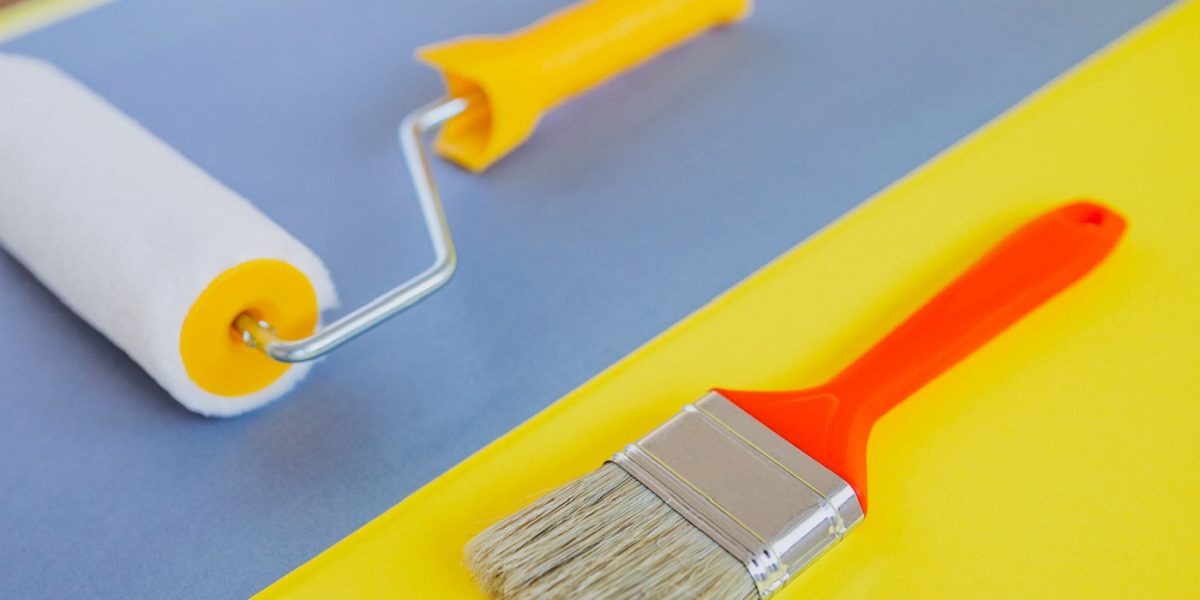 Workers in uniform. Painter and carpenter craftsman. Flat style modern vector illustration.
Workers in uniform. Painter and carpenter craftsman. Flat style modern vector illustration.
Let’s go back to basic color theory and start at the beginning. Colors can be classified into different groups or families, which is why we distinguish between primary, secondary, and tertiary colors. Starting from three main colors (yellow, red, and blue), the rest of the shades of the chromatic circle will be formed. Also, knowing this will help us improve the way we prepare paint colors quickly.
What Are The Primary Colors?
The traditional primary colors are Red, Blue, and Yellow in their deepest known hues. And they are the colors used in the elementary teaching of plastic arts. Primaries cannot be made up of other colors, and they are equidistant on the color wheel.
A more current color model considers Cyan (an intense turquoise), Magenta (a fuchsia red), and Pure Yellow as primary colors, with which all existing colors can be formed. This model is the most used in printing and industry.
What Are The Secondary Colors?
They are obtained by mixing two primary colors in equal parts. The secondary shade obtained depends on the precise shade or pigment used as the primary. In the same way as the previous ones, the secondary ones are at the same distance on the chromatic circle forming a triangle.
The secondaries are orange, green, and purple and are formed as follows:
- Orange = red + yellow
- Green = yellow + blue
- purple = red + blue
What Are The Tertiary Colors?
There are two ways to obtain tertiaries: one is the mixture of equal parts of a primary and a secondary, which we will call intermediate color. And the other is the union of two secondary colors, with which three slightly saturated or dirty tones are achieved. In the image, the Secondariesare indicated with the letter S and the tertiaries with the T:
The tertiaries are formed like this:
- Old red (top) = purple + orange
- Slate Grey, or Steel Blue (on the left) = Purple + Green
- Citron, or dirty yellow (on the right) = green + orange

What Are The Intermediate Colors?
As I said before, the intermediates are tertiary colors that start from the union of a primary and a secondary; that is, they are a step between the two. The intermediate tertiaries are 6 and are formed as follows:
- Orange-red (Vermillion) = red + orange
- Purplish red (Guinda)= red + purple
- Orange Yellow (Amber) = Yellow + Orange
- Greenish yellow (Lime) = yellow + green
- Greenish blue ( Teal ) = blue + green
- Purplish Blue (Indigo) = Blue + Purple
Quaternary Colors
The quaternary is formed from the union of two tertiaries. In this way, dirty, grayish, or earthy colors are obtained. The color is imprecise and depends greatly on the intensity, tone, and quantity of the colors that form it. There are no established names for the quaternary colors.
An important clarification: this note is based on the traditional Coloration Model, also called RYB (Red, Yellow, Blue), since it uses Red, Yellow, and Blue as primary colors. There are also other models where the main colors differ, such as CMY (Cyan, Magenta, and Yellow) or RGB (Red, Green, and Blue). The traditional model is the oldest and widely used in mixing paints and in school or art education.

